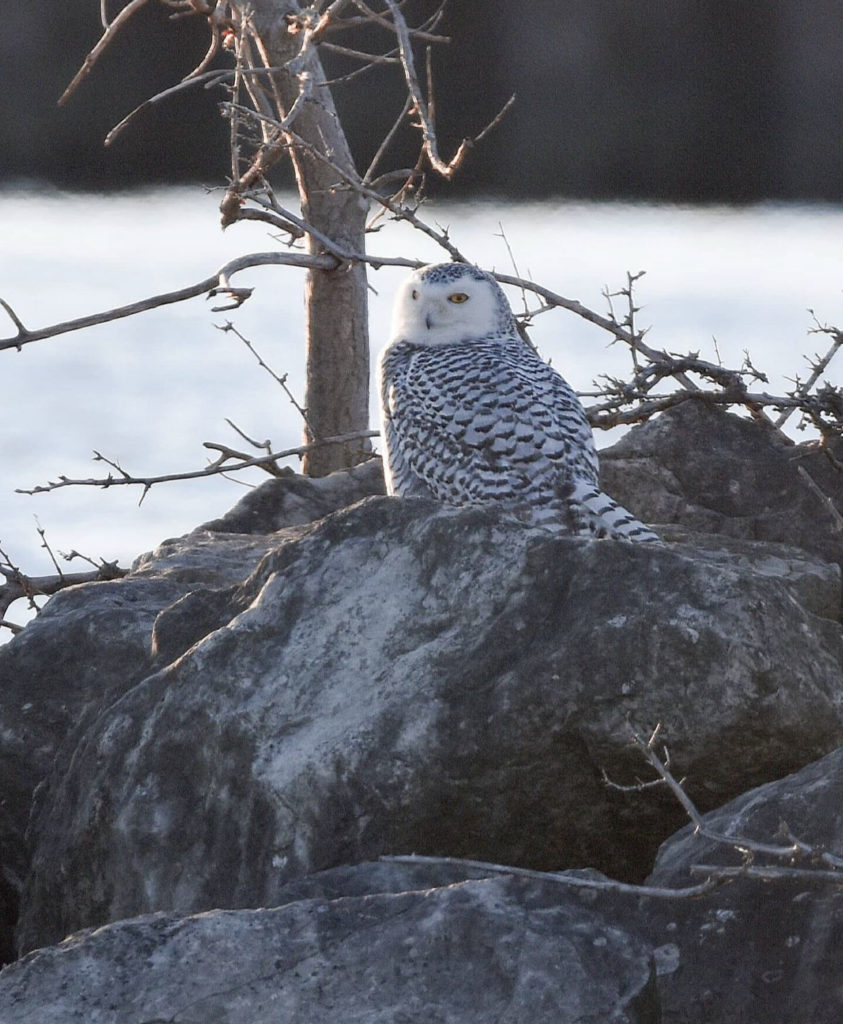Owls of Ohio
January 17, 2022
Posted by Lake Erie Nature and Science Center

If you look to the skies in Ohio, you will see a variety of birds: songbirds, gulls, hawks, vultures and more. What you might not easily see are owls.
Owls are common in Ohio. However, they can be difficult to spot due to their nocturnal behavior and excellent camouflage. With eight species in the state, there are plenty of owls — if you know where to look.
Great Horned Owls, Barred Owls and Eastern Screech Owls are common species that can be seen year-round. They prefer nesting in mixed deciduous and coniferous woodlands, which are plentiful throughout the state. If you’ve spotted an owl in Ohio, it’s probably one of these.
Barn Owls also reside in Ohio year-round, but are considerably rarer. Their preference for very specific habitats, such as the grassy areas most commonly seen in Holmes County, limits their range.
Short-eared Owls also prefer open prairies, grasslands and the tundra in the summer. In winter, they are often seen at airports, since the wide-open land mimics the plains of the tundra. This can be dangerous for both the owls and planes, as there is a risk of owls colliding with aircraft as they swoop down to catch their prey.
Not all owls live in Ohio year-round. Migratory species such as Northern Saw-whet Owls and Long-eared Owls frequent the state in winter. Long-eared owls, which prefer to hang out in low thickets and conifers near open grasslands and prairies, are scarcer and can be hard to find.
In contrast, Northern Saw-whet Owls are a common winter resident. The smallest owl species in Ohio, these birds have an average weight of 75 to 100 grams — approximately the same weight as an American robin!
They prefer to live in large groups of evergreens adjacent to fields, where they can find plenty of food such as mice, shrews and voles. If you are looking to catch a glimpse of one, visit the Cleveland Lakefront Nature Preserve of the Cleveland Metroparks.
While all owls in Ohio are impressive, the largest and most desired owl to see is the Snowy Owl. Another winter visitor, Snowy Owls migrate south from the Arctic.
This winter is shaping up to be a fantastic season to spot them in Cleveland and along Lake Erie. Snowy Owl populations have an irruption (a good breeding year) about every four years, which is caused by a boom in the lemming population, their most common prey. With more lemmings to feed on, more young owls survive to adulthood.
Common along the lakefront — where they feed on gulls, ducks, grebes and small rodents — you can see Snowy Owls resting on breakwaters and in marinas. It is not unusual to see five or more birds from Edgewater to the East 55th Marina in one day!
These birds also prefer farms, agricultural fields and large, flat expanses of land which, like the Short-eared Owl, unfortunately include airports.
Photo Credit: Jeffrey Spicer, @jeff.photos.clev

